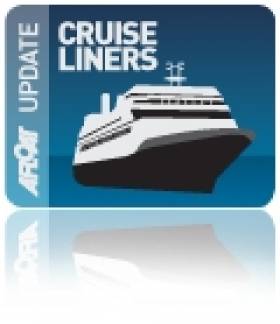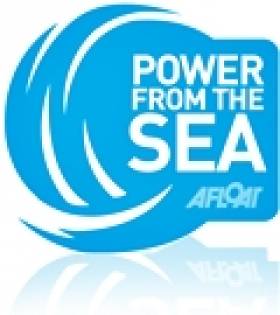Displaying items by tag: Belfast Harbour
#BelfastCityQuays - A £250m, 20-acre Belfast city quays development proposed by Belfast Harbour with outline planning permission has been awarded approval.
The water-side development will be office led and also include retail, residential, a hotel and a car park.
Welcoming today's award of outline planning permission for City Quays, Graeme Johnston, Belfast Harbour's Property Director said: "City Quays is an extension of the highly successful Clarendon Dock development. The 20-acre development will regenerate a significant section of Belfast's waterfront and help reconnect the river frontage to the city centre.
"City Quays is an office-led, mixed use scheme which will be of particular appeal to potential inward investors and growing local businesses. Construction is underway for the first office in the development.
The award of outline planning approval for the entire scheme will enable Belfast Harbour to progress more detailed plans and showcase the full City Quays project to potential investors."
Record Trading As Profits Soar At Belfast Harbour
#Belfast - Belfast Harbour is reporting a profit of £26 million (€32 million) in 2013, a whopping 42% rise on the previous year.
The Belfast Telegraph reports that a record increase in the trade of coal, stones, scrap and animal feed fuelled the Belfast Lough port's growth in the 12 months of 2013.
And with more than £60 million (€74 million) committed to future projects for the port, such as wind energy and developing its cruise tourism potential, it's expected the port will see its growth continue in the years to come.
The Belfast Telegraph has more on the story HERE.
Discovering Belfast Harbour’s Cruiseship Potential
#CruiseBelfast – Discovery is to open the Belfast Harbour cruise season in late March with up to 750 passengers calling to the port out of a total of 110,000 visitors expected this year, writes Jehan Ashmore.
In 2013, Belfast Harbour handled around 60 cruiseships, a record for the port that represented a 45% jump in passengers and crew, up from 75,000 to 110,000 in just one year. It was estimated the associated spend generated more than £18m for the local economy and in opening up Northern Ireland in general as a visitor destination.
Once again, many of the leading cruise operator brands are calling to the harbour in 2014, among them; Princess Cruises, Holland America Line, Celebrity, MSC, Thomson, Fred Olsen Cruise Line and Saga Cruises. In addition the port is to welcome several cruise callers for the first time, they are the FTI Berlin, Kristina Katarina, Louis Aura and the sail-assisted Club Med 2.
As previously reported, Belfast Harbour is building the first purpose-built cruise terminal in Ireland, which is to attract a wider global audience of cruise passengers using the £7m facility which is due for completion this year. Cruise ships will then transfer from Stormont Wharf in Co. Antrim, the main existing berth on the north side of the Lagan to the opposite bank adjacent to Alexandra Dock in Co. Down.
The new terminal, to include a 2.5 acre area for coaches and a welcome centre to showcase Northern Ireland, will also be within walking distance of Titanic visitor attractions - Titanic's Dock & Pumphouse, Titanic Belfast, SS Nomadic and the WWI battle-cruiser HMS Caroline which is to undergo restoration work.
The facility will handle all cruise ships currently visiting Irish Sea ports but is also designed to cater for 'next generation ships' capable of accommodating 4,500 passengers and crew.
Belfast Harbour Trade Figures 'In The Black'
#BelfastHarbour -Belfast Harbour's trade rose by 16% during 2013 with record tonnages of almost 23 million passing through the port.
Over half the increase, 1.7m tonnes, was fuelled by an increase of over 150% in coal imports. This reflects a new service through Belfast to supply AES Kilroot power station which generates c.30% of Northern Ireland's electricity.
Overall, Dry Bulk cargoes, vital to Northern Ireland's agri-food and quarry industries, increased by 45% to a record 6.744m tonnes. Growth was also positive in other sectors such as Liquid Bulk (primarily petrol and diesel) which was up 2% to 2.173m tonnes, and freight traffic, up 8% to a record 466,000 vehicles during the year.
Break Bulk tonnages rose by 57% to 452,000 tonnes, driven by the Harbour's new offshore wind terminal operated by DONG Energy and Scottish Power Renewables. Trade in wind farm components rose from just 3,000 tonnes in 2012 to over 200,000 tonnes last year.
Roy Adair, Belfast Harbour's CEO, said: "2013 has been a very positive year for Belfast Harbour as the economy started to recover slowly and investments in new facilities began to come online. Coal tonnages have been particularly impressive following capital expenditure in new deep water facilities.
"Likewise, Belfast's £50m investment in the UK's first bespoke logistics and assembly harbour to support offshore renewables is supporting significant growth in an industry which is benefitting not just Belfast Harbour, but the wider Northern Ireland economy.
"Major investments by Stena Line in new terminals and vessels is also encouraging growth, with increased traffic on all of Stena's routes from Belfast to Cairnryan, Heysham and Liverpool.
"Tonnages are now 30% up on the pre-recession peak of 2007. Belfast Harbour remains committed to identifying new capital expenditure projects and initiatives to support further growth in tonnages and in the local economy."
Northern Ireland's Minister for Regional Development, Danny Kennedy MLA, added: "The release of these figures clearly demonstrates the significant economic contribution that Belfast Harbour continues to make to Northern Ireland in terms of connectivity, jobs and the local economy. These figures, together with the recent investment in DONG Energy and other ongoing projects, underlines the commitment of the Port to achieving the Executive's Programme for Government priority to grow the economy."
In addition to coal and wind farm components other bulk trades also grew strongly over the year. Record years were achieved in scrap and stone tonnages, both rising by 28% to 327,000 tonnes and 1.22m tonnes respectively, while fertiliser imports rose 31%. Animal feeds and grains rose 2% to 2.09m tonnes, a record year reflecting the continuing strength of the local agri-food sector.
Joe O'Neill, Belfast Harbour's Commercial Director, said: "2013 has been a particularly good year due to a number of major, long term investments by Belfast Harbour coming to fruition simultaneously. In recent years the three trades which led growth in 2013 - renewables, coal and freight – have benefitted from dedicated capital expenditure by the Harbour totalling c.£100m.
"Trades are, however, always cyclical and the harbour will continue to seek new commercial opportunities and investments to help future-proof the business."
During 2013 Belfast Harbour also noted a 2% rise in passenger numbers to 1.4m, the highest figure since 2004. 59 cruise ships also called at the port bringing 105,000 passengers and crew.
#OnTV - Tonight BBC One Northern Ireland is to broadcast "Belfast City: Mud, Sweat and 400 Years". The documentary starting at 22.35 is presented by former army engineer Dick Strawbridge who knows a thing or two about incredible feats of construction.
So when he was asked about where Belfast Harbour ranks in terms of ingenuity, there was no hesitation. "People talk about the efforts that went into building for the 2012 Olympics or the Channel Tunnel? Pah!" he said. "They're just not on the same scale as Belfast Harbour. It really is amazing."
The feat of engineering is made clear in this documentary made for the broadcaster, where you can read more from BBC News Northern Ireland. Strawbridge may also seem familiar on our screens as he is one of the presenters of the popular BBC series 'Coast'.
In addition, Afloat.ie had reported on a new heritage space 'A Port that Built A City' in Belfast Harbour that details the city's emergence as a major port and its subsequent growth and development as an industrial hub.
Belfast 400 Years of Maritime History Exhibition
#Belfast400 – Belfast's 400 years of maritime history is being recognized with a new exhibition.
The News Letter which has more reports that the new heritage space 'A Port that Built A City' in Belfast Harbour details the city's emergence as a major port and its subsequent growth and development as an industrial hub.
Details of how the public can visit 'A Port that Built a City' will be made available early in the New Year through an online booking system. For photographs of the exhibition click this link.
Belfast Harbour Achieves High Standards in 'Green' Survey
#GreenPort – Once again Belfast Harbour has been named as one of Northern Ireland's top 'green' companies in a major environmental survey.
The harbour scored the second highest marks and was awarded Platinum quintile status in this year's NI Environmental Benchmarking Survey, conducted by Business in the Community's ARENA Network.
The survey annually assesses top businesses in Northern Ireland for environmental management, performance and assurance.
Belfast Harbour's Public AGM
#BelfastPortAGM – Belfast Harbour's public AGM is to be held tomorrow (22 October) between 9.45am - 10.45am.
The venue is the Belfast Harbour Office on Corporation Square.
In order to anticipate demand, the organisers would appreciate if interested parties would notify in advance by e-mailing: or contacting Belfast Harbour office reception for details visit this link.
Belfast Harbour has in recent years invested £150m to develop port infrastructure. As previously reported on Afloat.ie, the port has embarked on a Masterplan for a period of over the next 20-30 years.
Belfast Harbour’s New Wind Terminal to Bring Huge Rewards
#DONGenergy - Belfast Harbour's new wind terminal assembly facility has created a fantastic opportunity for further inward investment, according to the head of one of the companies making turbines in the city.
Keith Anderson, chief corporate Officer of ScottishPower, was speaking as the firm's parent company Iberdrola reported first half earnings of €4.1bn (£3.5bn).
In Belfast, Scottish Power and Danish energy giant DONG energy currently sublet a a 50-acre terminal, the largest single investment in Belfast Harbour's 400-year history and the first purpose-built offshore wind installation and pre-assembly harbour in the UK or Ireland.
For more on this story The Belfast Telegraph reports.
#BelfastHarbour – In 2012 Belfast Harbour recorded a jump in profits resulting from investment in deep-water facilities and new Stena Line ferries, writes The Irish Independent.
Revenues at the port company, which is celebrating its 400th anniversary, were £39m in 2012, up 7pc from 2011. Operating profit was £18.4m, up 11pc.
The company said trade grew by more than a tenth, primarily due to improved performance in its bulk and roll-on / roll-off business.
2012 was also the first full operating year for Stena Line's new Superfast ferries which the port says has improved the competitiveness of the Belfast – Cairnryan route.







































































